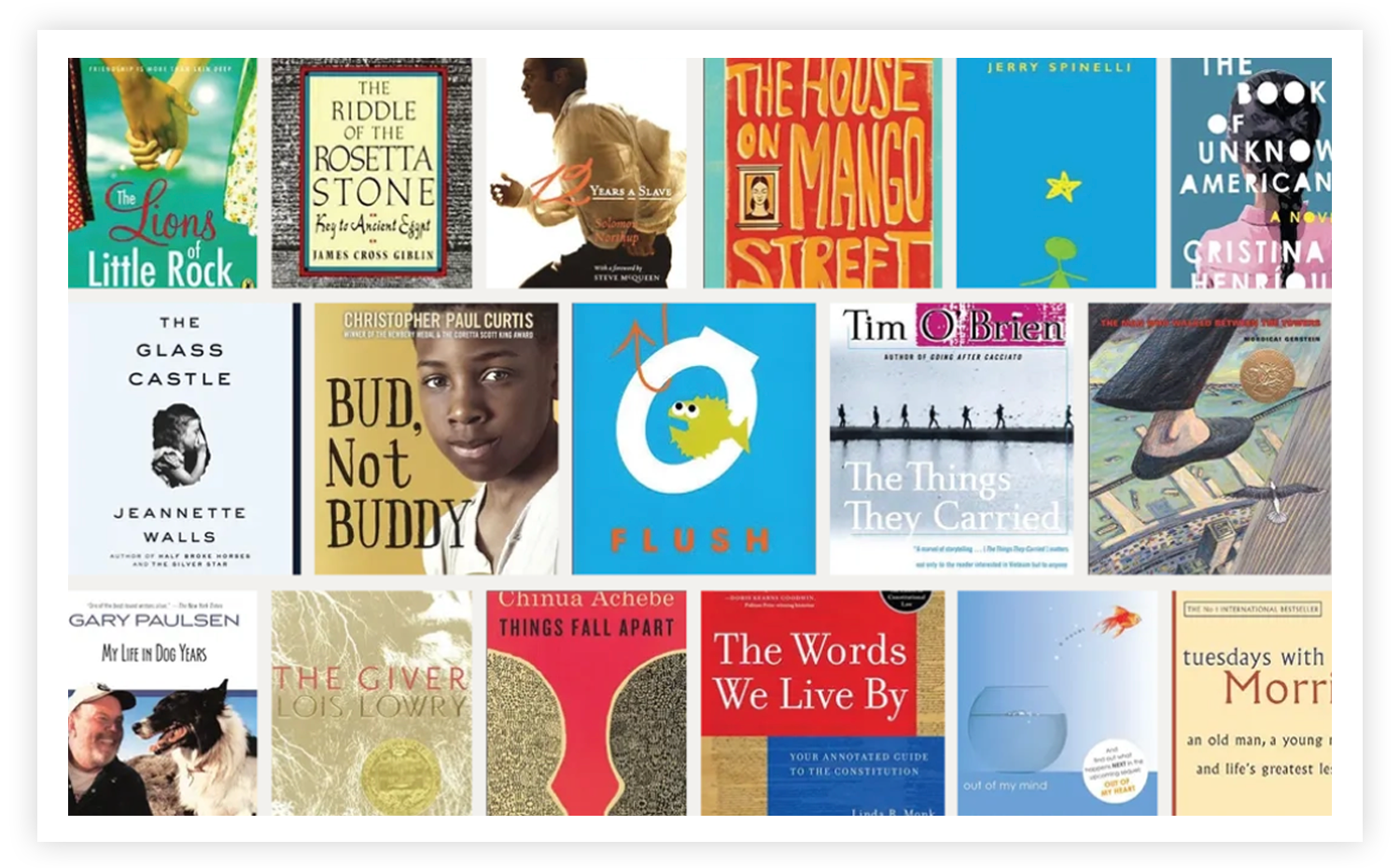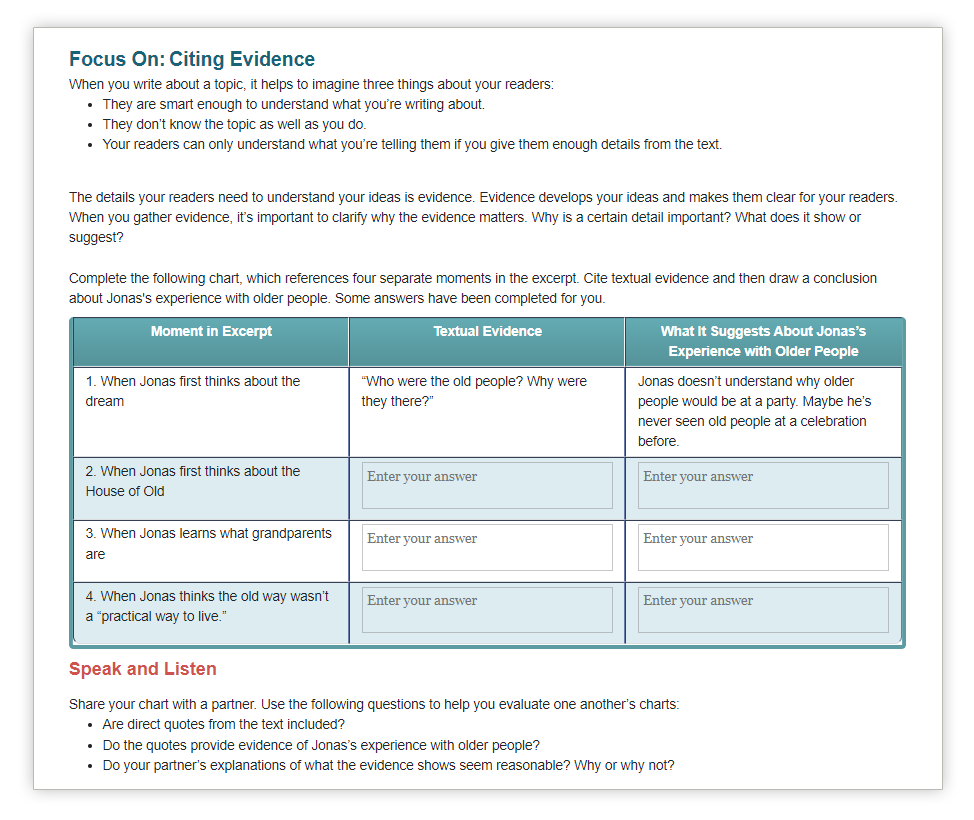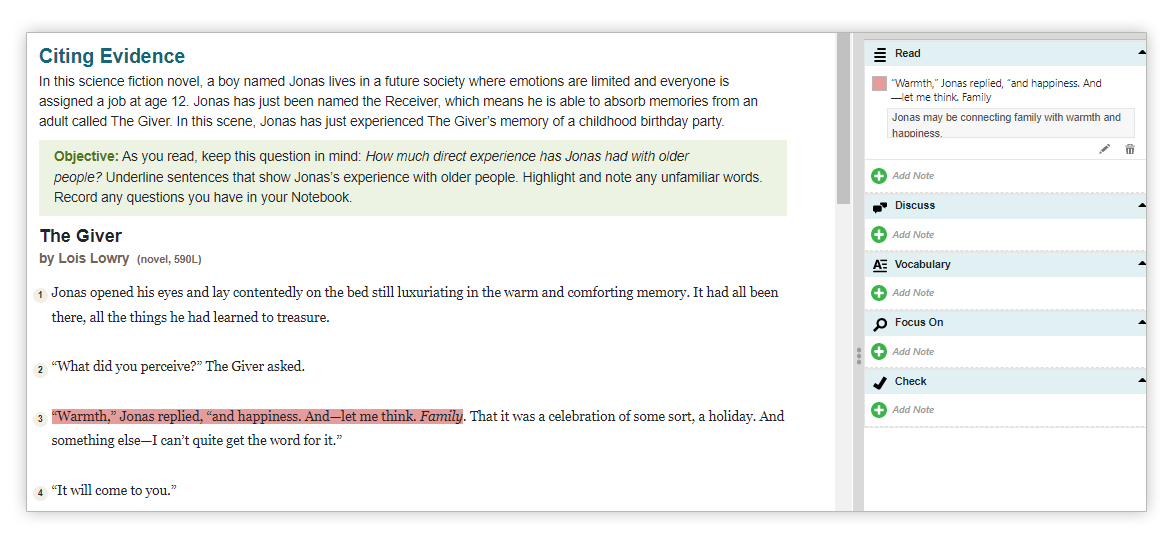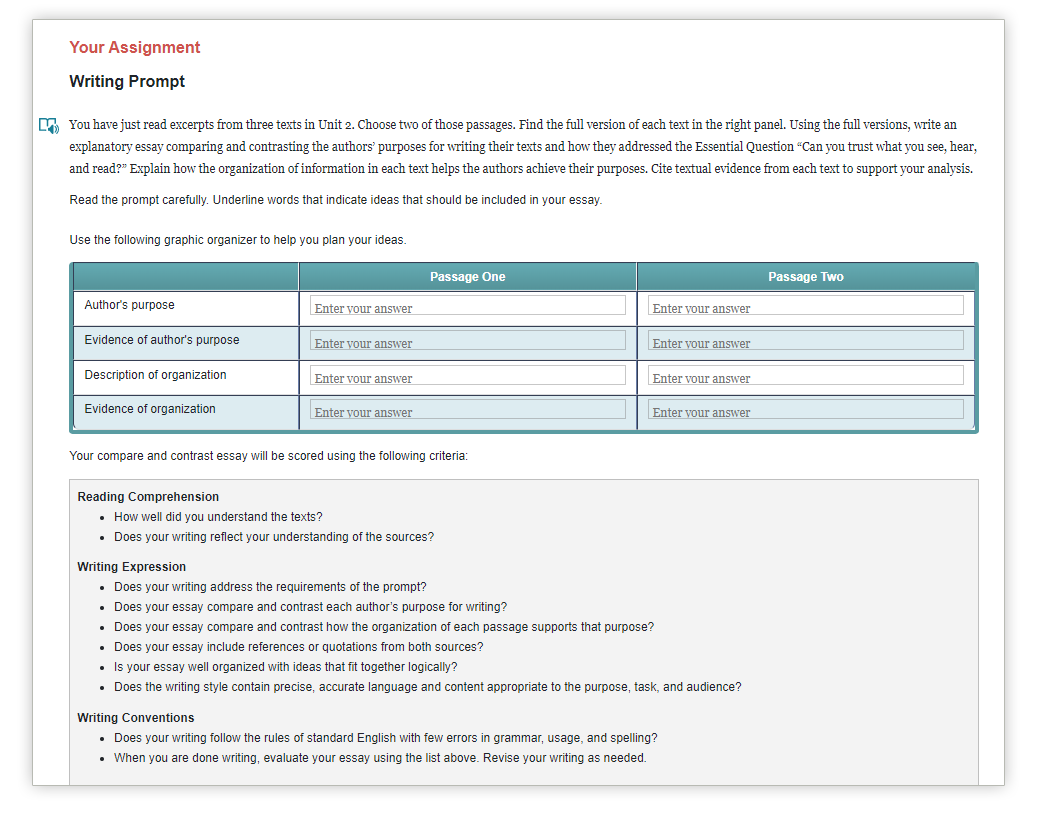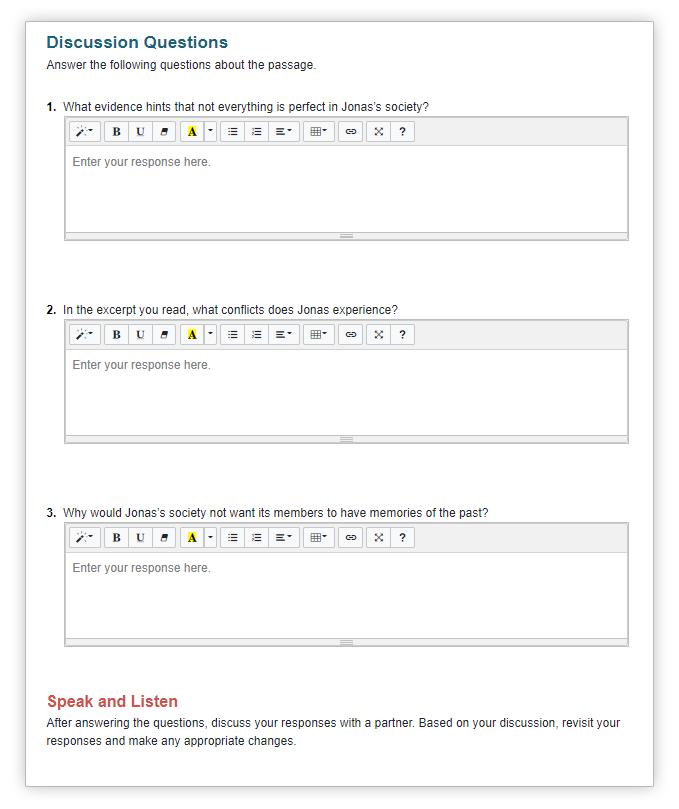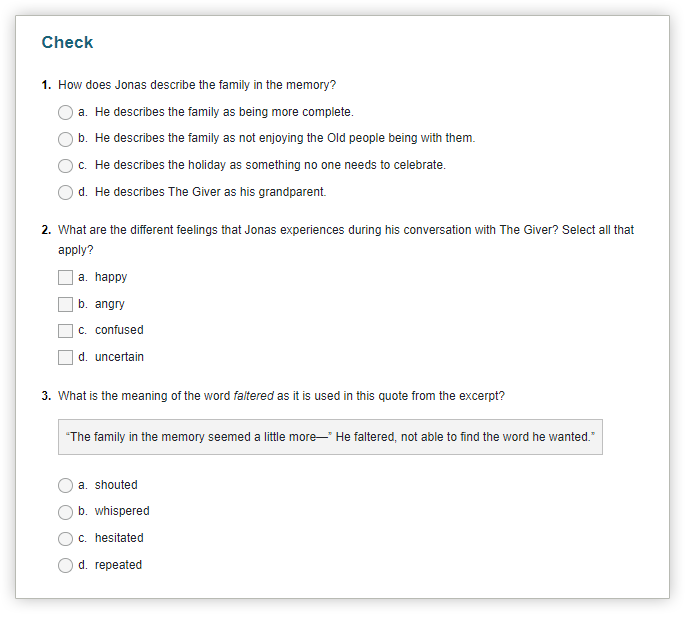This is a demo store. No orders will be fulfilled.
Grounded in Learning Science
Grounded in Learning Science
Where the Science of Reading and Great Literature Meet!
High-interest themes and thought-provoking essential questions build engagement as students become immersed in outstanding literary and nonfiction selections.
Bridge the diverse skill needs of your students. Connections: English Language Arts is rooted in the science of learning. Leveraging best practices and time-tested, proven instructional methods to support the needs of all learners, you can become the reading teacher your students need while teaching the literature you love.
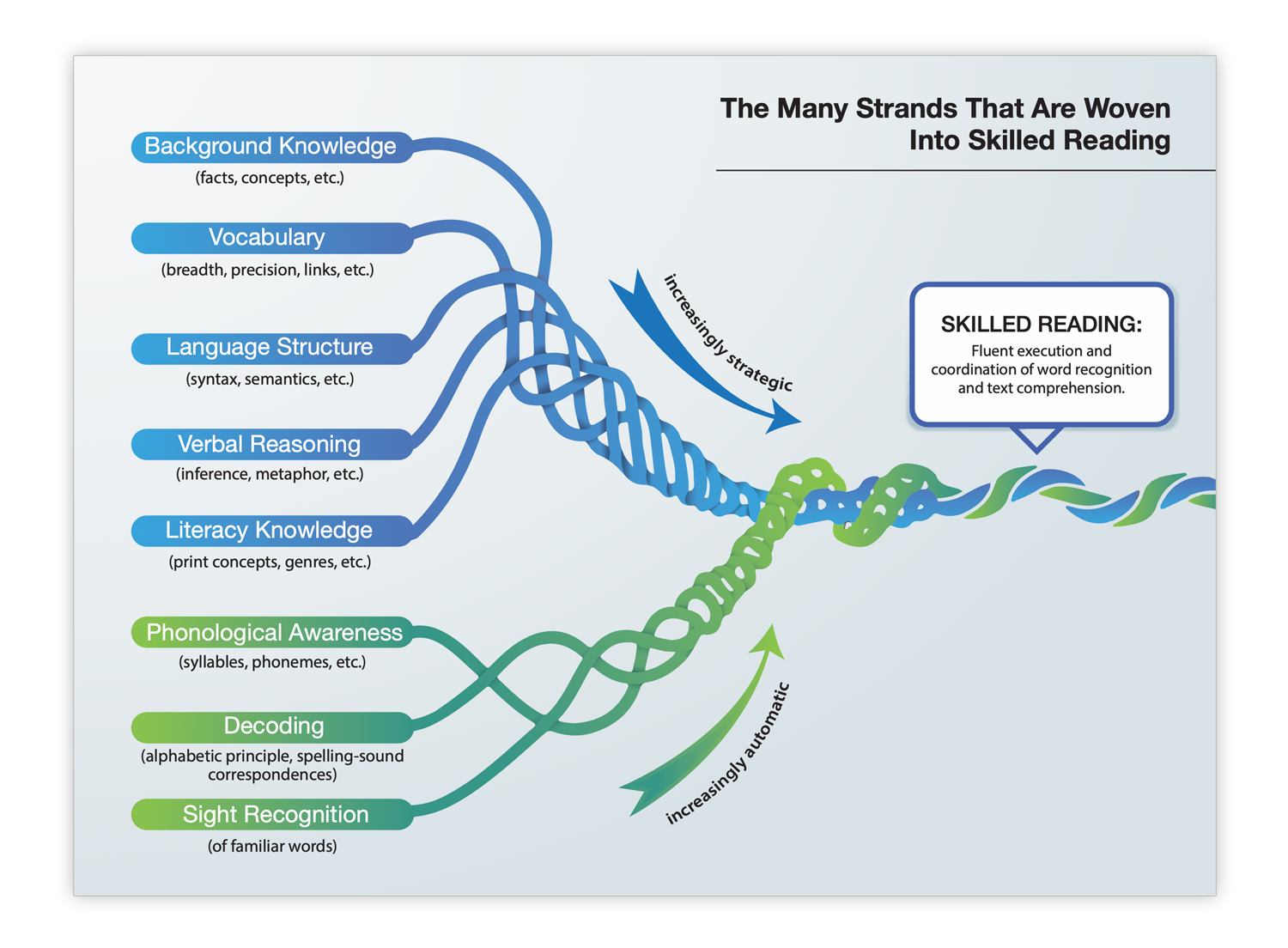

Interpretation of The Reading Rope created by Dr. Hollis Scarborough in 2001.
Science of Reading in Connections: English Language Arts
Readers make meaning of their reading through connections—text-to-self, text-to-text, and text-to-world.
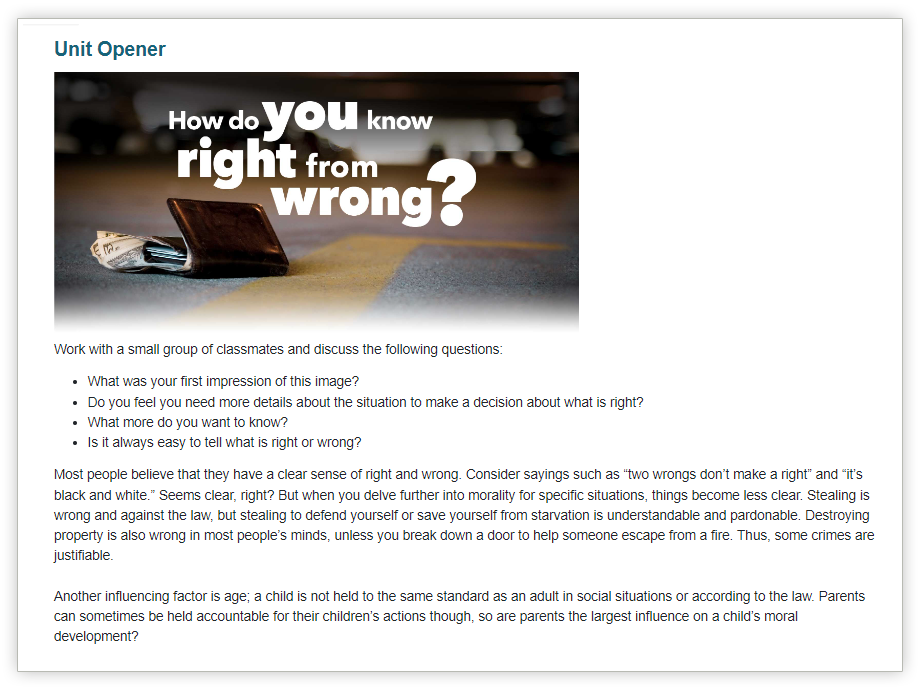
Essential Questions are relevant questions that encourage students to think about and make connections to the texts they read in the unit.
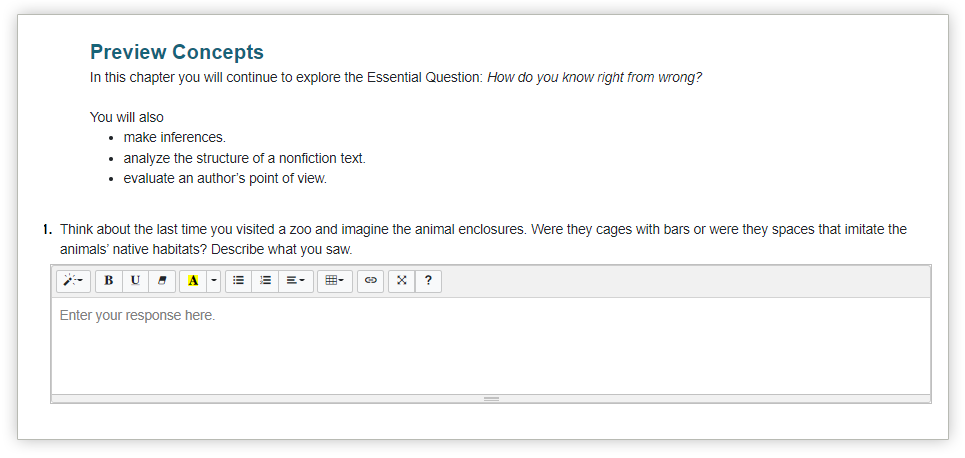
Preview Concepts connect to the essential question to get students thinking about what they already know or think about the question.
There is a need for direct instruction of vocabulary items required for a specific text. Vocabulary learning is most effective when it entails active engagement in learning tasks.
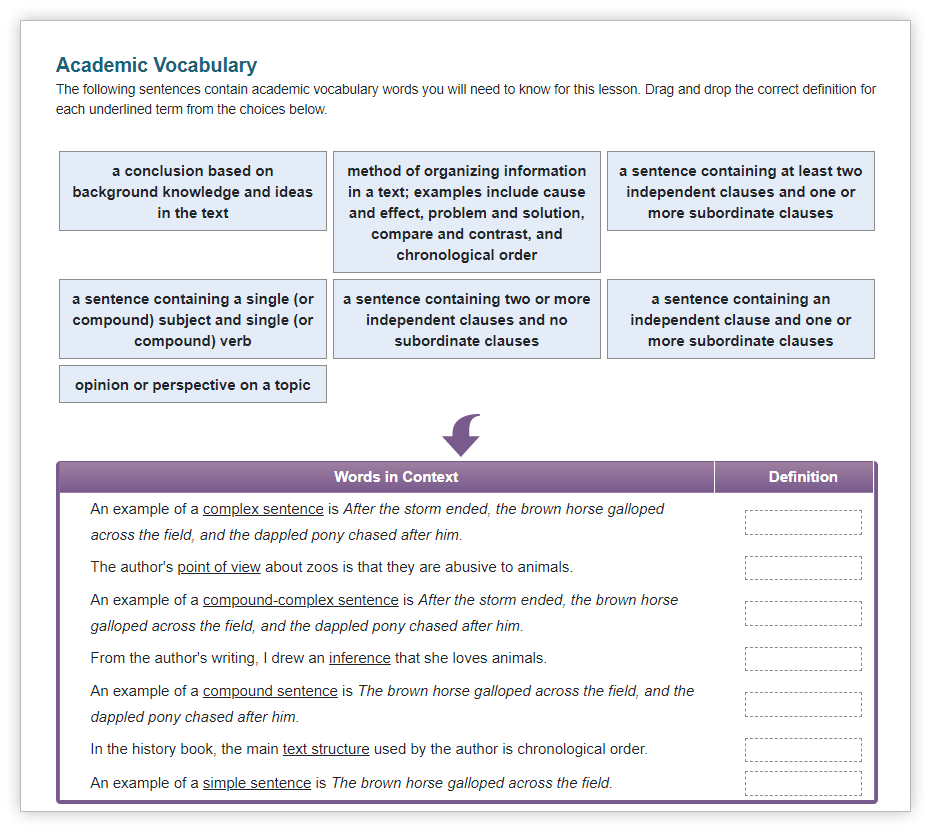
Academic Vocabulary is the launching point, not just for the reading of the text, but also for understanding and using the vocabulary.
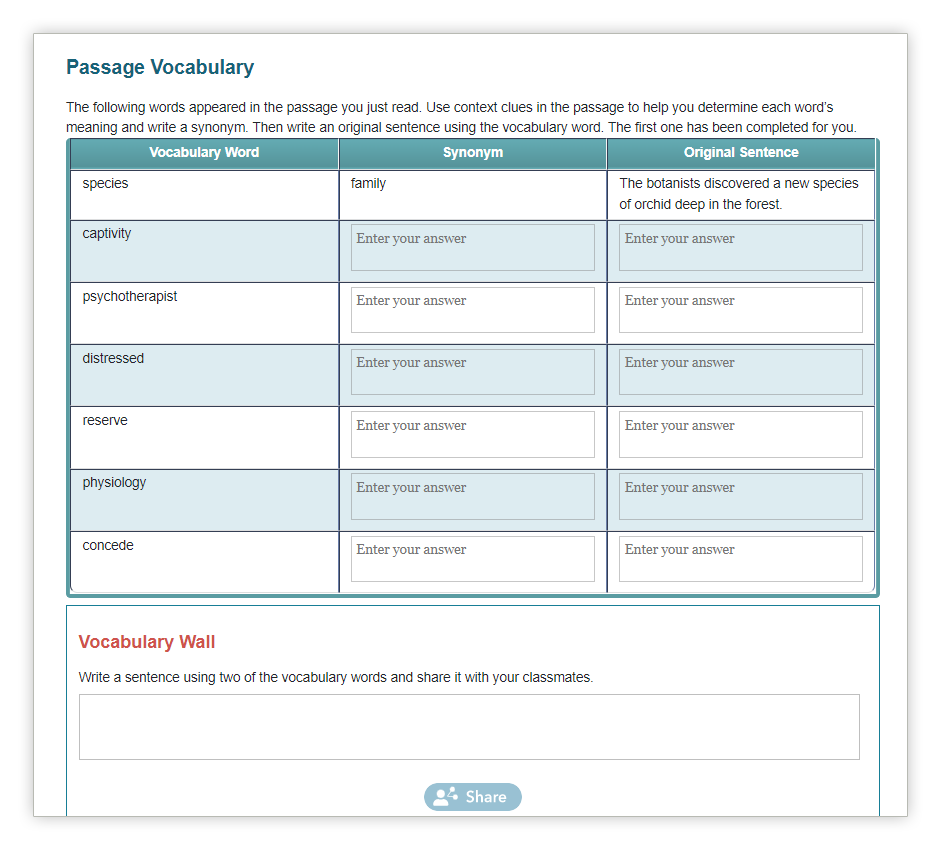
Passage Vocabulary asks students to apply the meaning from the passage vocabulary drawing on the context clues. The Vocabulary Wall feature encourages peer collaboration.
Skilled readers can identify the elements of genre by their specific characteristics.
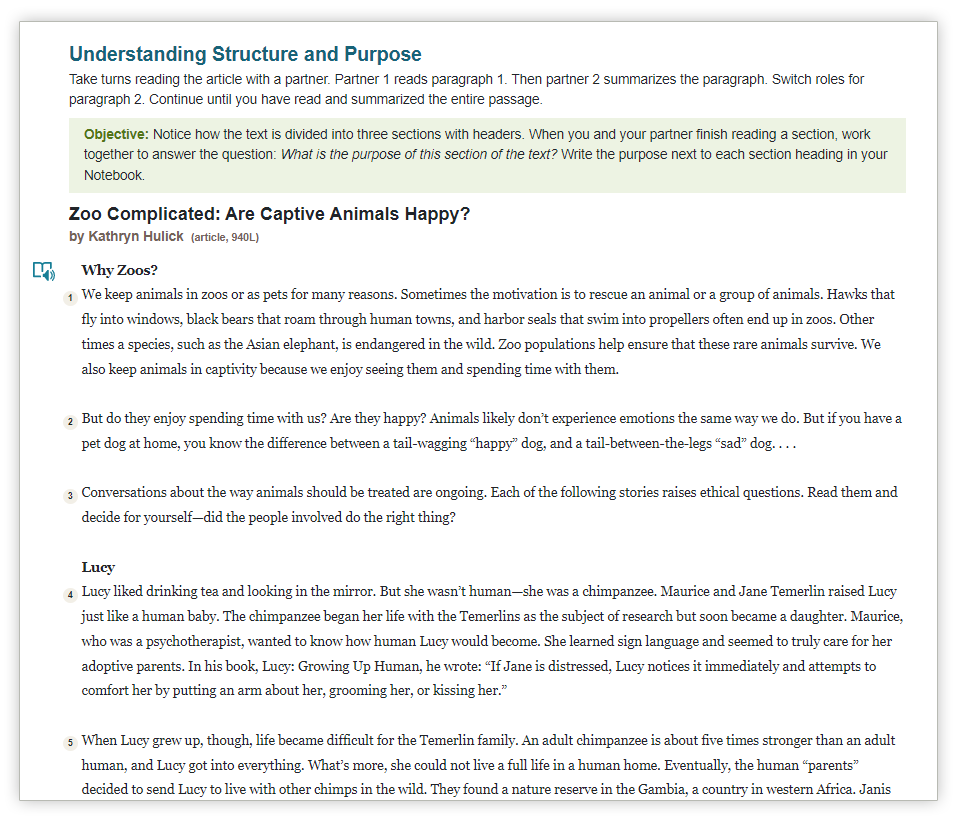
Literacy Knowledge is embedded in the close reading focus skill. Skills are scaffolded to help students sequentially extract meaning or explore the elements of the genre.
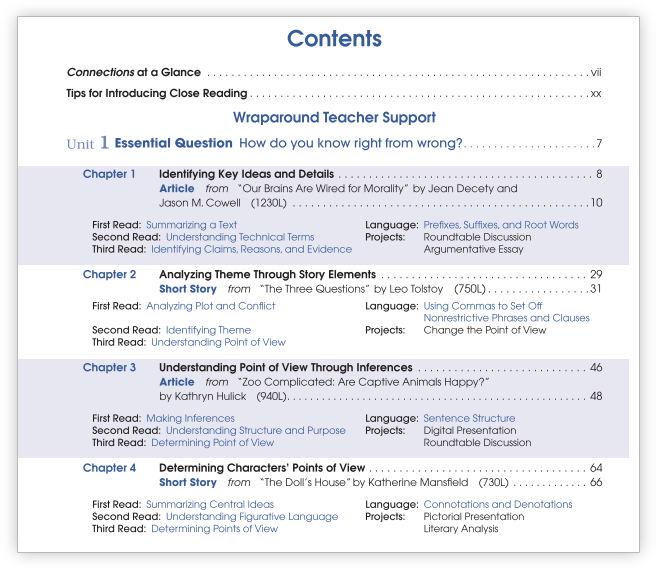
Connections: English Language Arts gives students an opportunity to read and compare a variety of genres. Each opportunity brings with it a chance for students to explore an element specific to that genre and text structure.
Skilled readers understand shades of meaning and complex sentence structure. As students read, they explore word choice related to author’s purpose, author’s voice, figurative language, and tone.
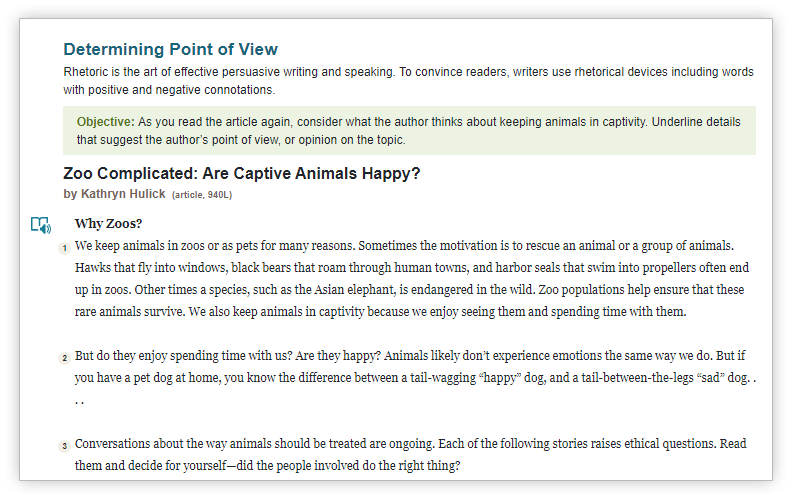
While close reading the text, students apply skills like:
- Analyze word choice and dialogue
- Explore tone
- Understand author's use of repetition
- Delve into rhetorical analysis
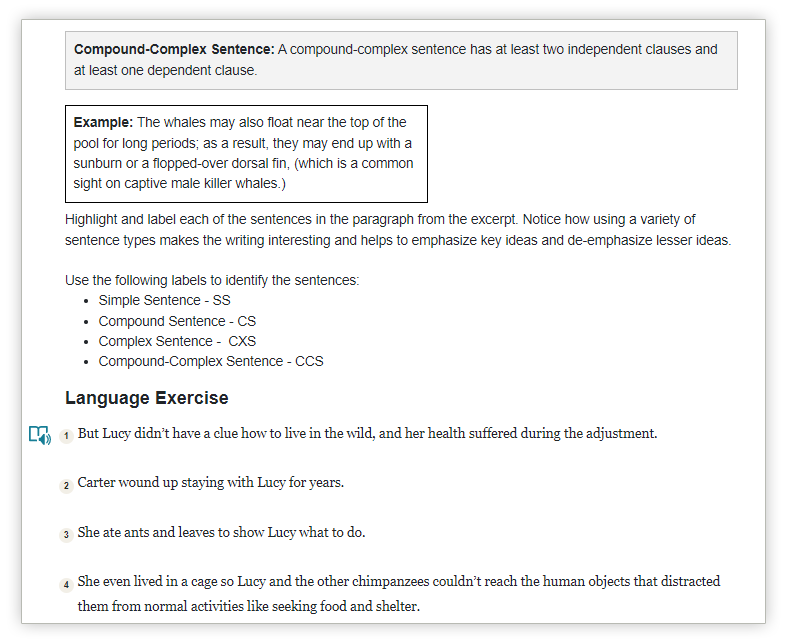
After close reading the text, the lesson wraps up with an application of a language skill.
Independent learners must be able to persist in the face of challenging tasks. Students are expected to think deeply about a text—infer meaning from what is explicitly stated or implied.
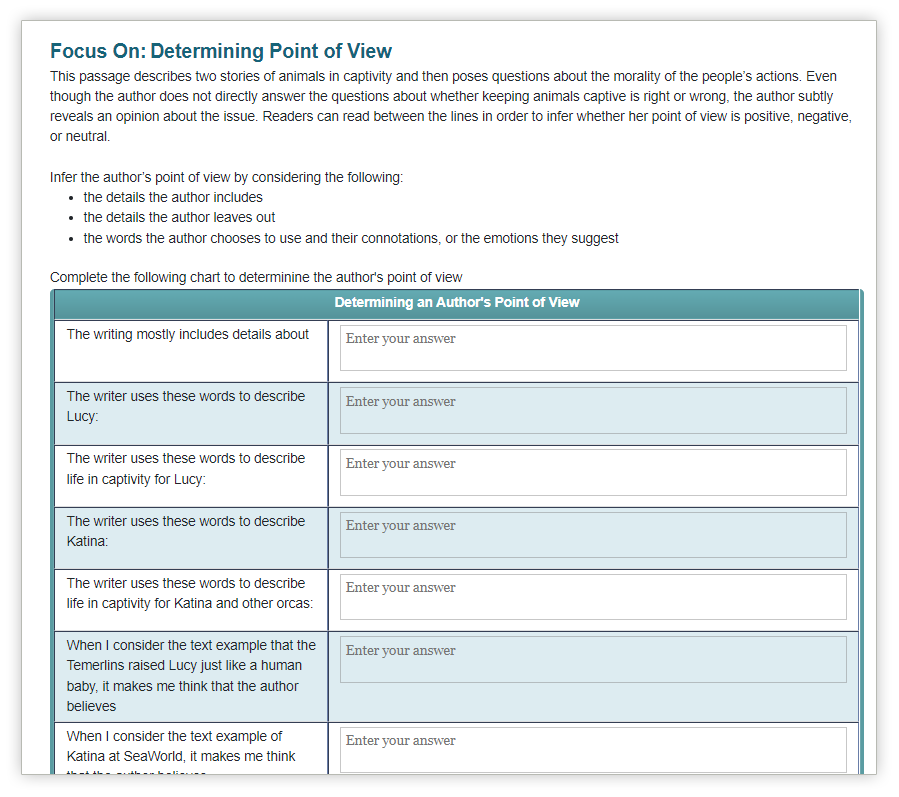
Connections: English Language Arts uses short excerpts from complex texts to guide students as they practice and apply the reading/literary skills for the lesson while becoming critical readers.
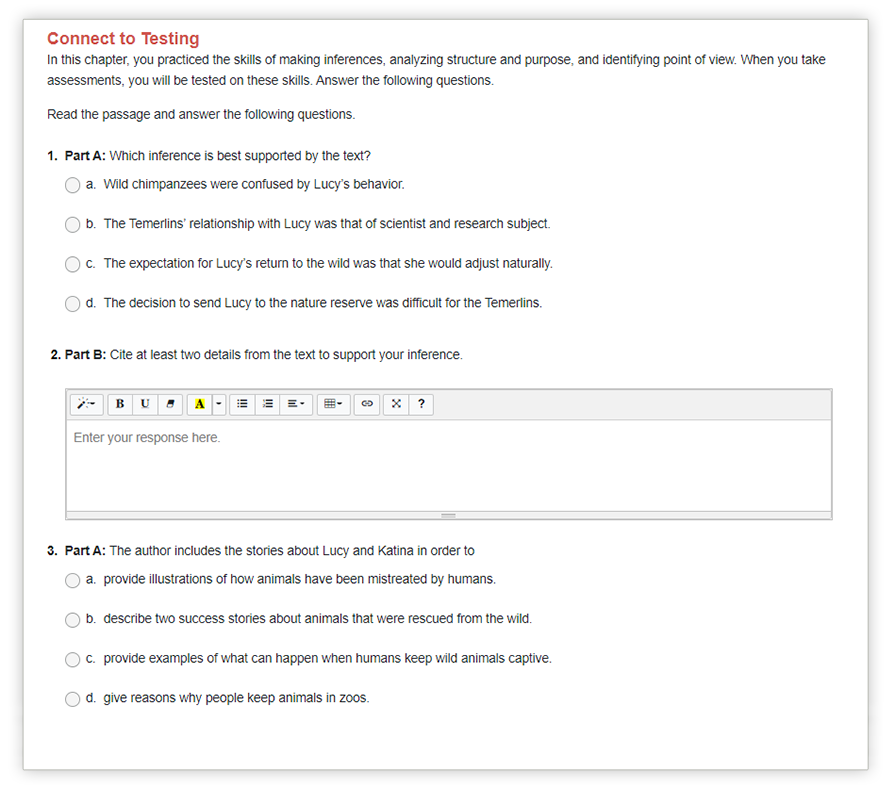
Students write in response to reading, synthesizing texts, and using relevant textual evidence.
Research-Based Instructional Design
The step-by-step lesson design is focused on a single learning objective and carefully scaffolded to maximize student success.


Outstanding Literature
High-interest themes and thought-provoking essential questions in areas such as:
Current Events—diversity in society; equality and justice; knowing right from wrong; trusting what you hear, see, and read; the impact of technology on jobs; the costs of innovation.
Themes—family, decisions, story-telling, horror, journey, freedom, identity and the forces that shape us, physical appearance, crime and punishment.
Culture and History—the Native American experience, how history shapes us, how ideas bring about change, the impact of war, the role of women over time.
